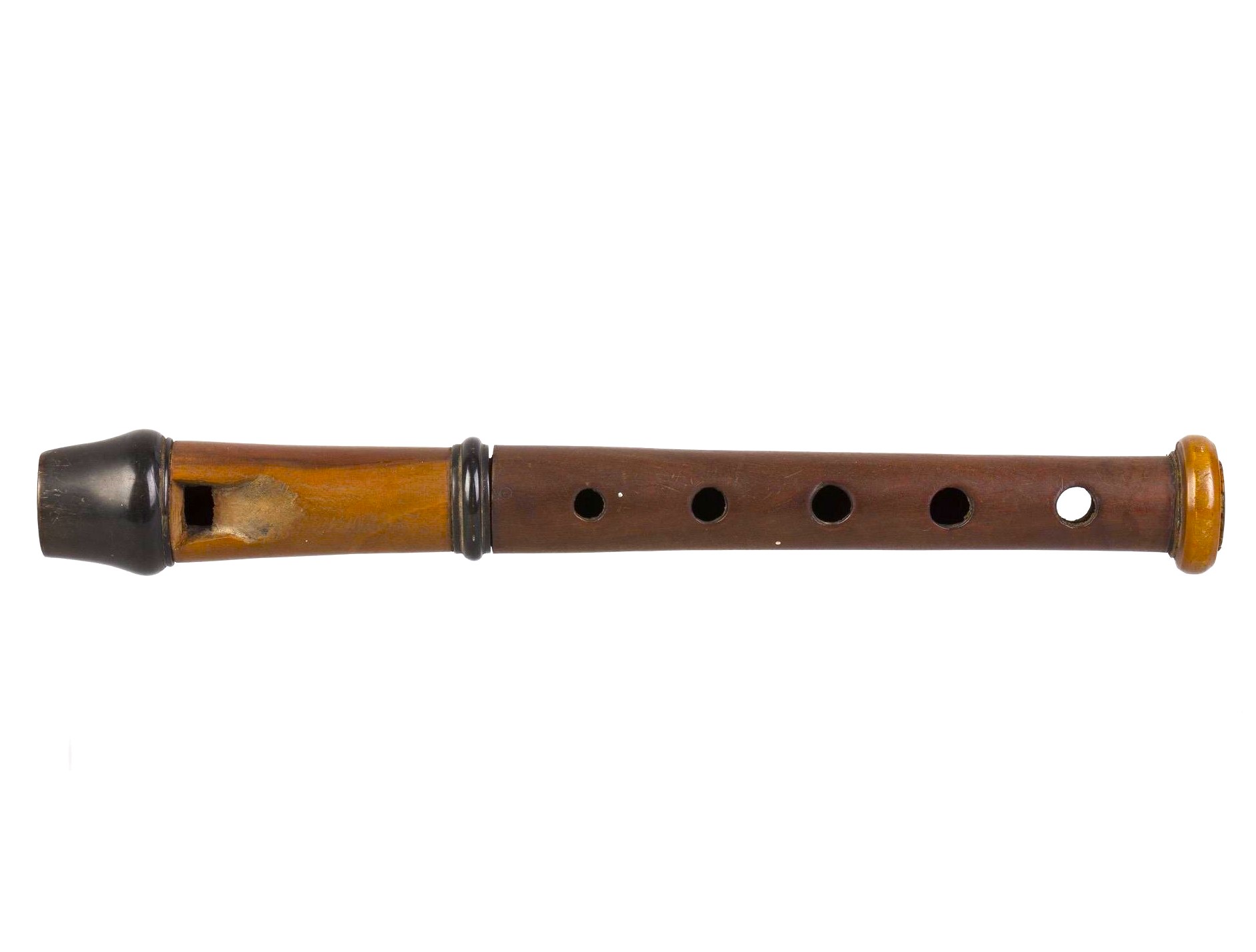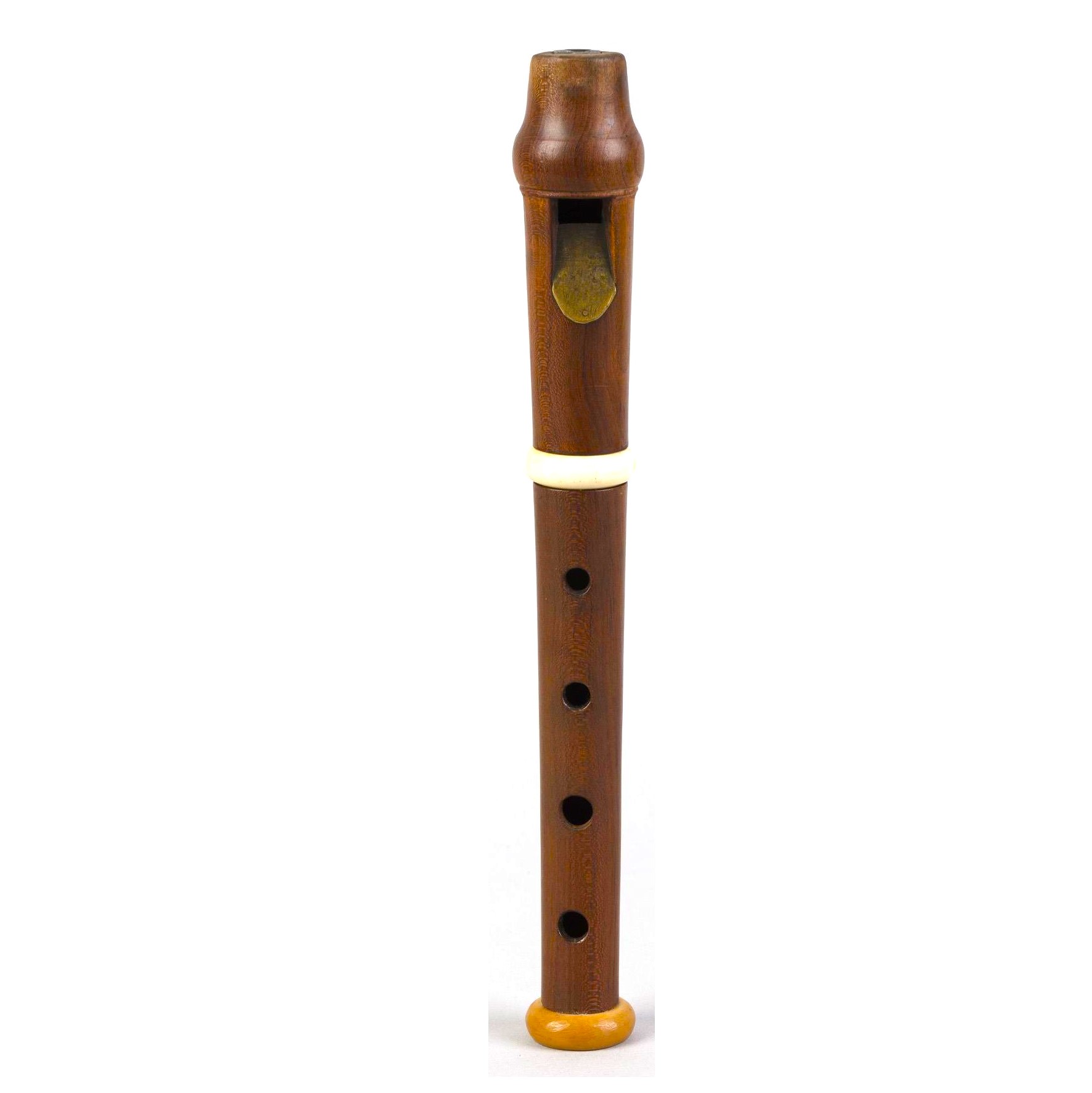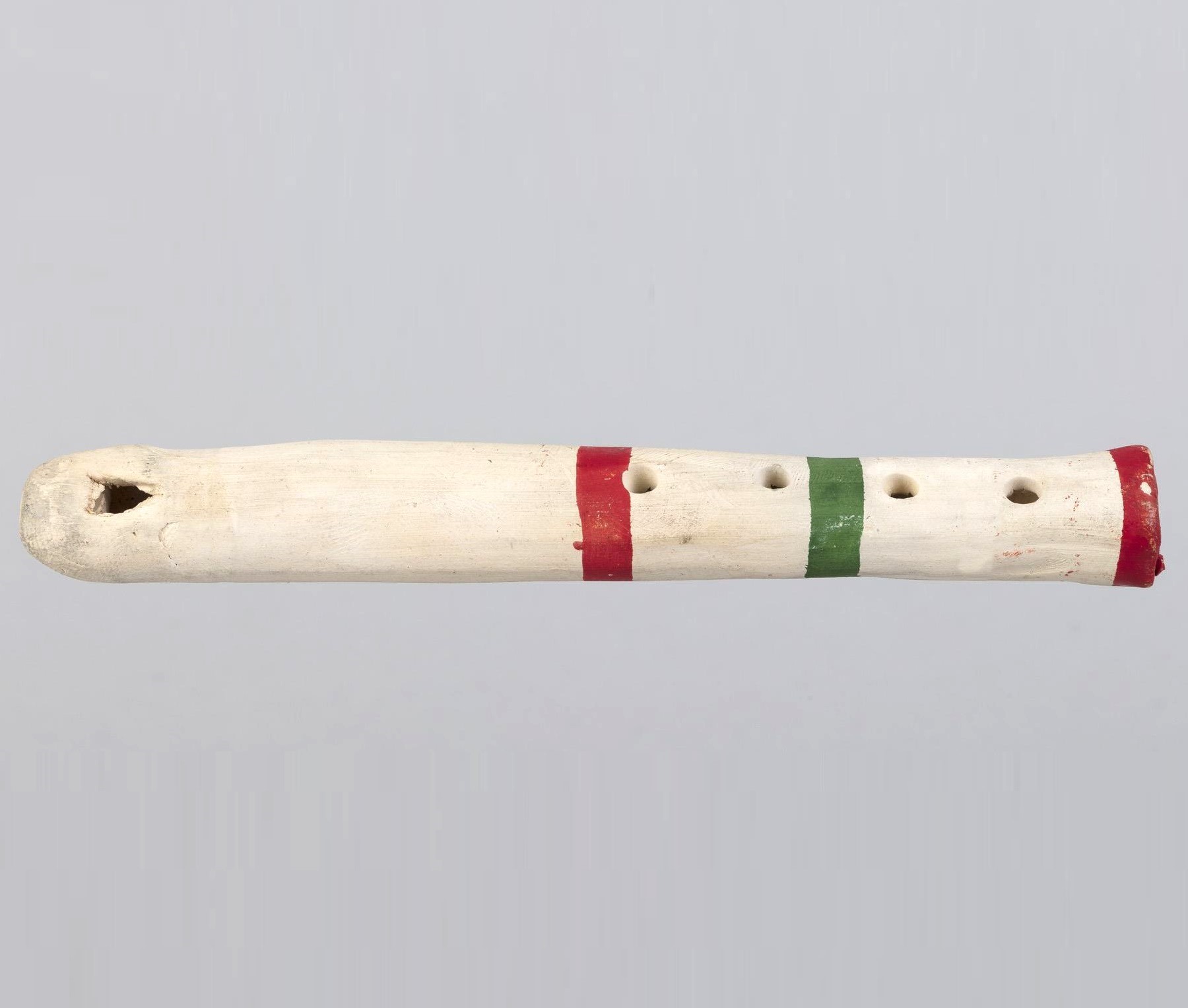Flabiol
Woodwinds
Europe
Between 1001 and 1900 AD
Video
The Flabiol is a small, high-pitched wooden flute commonly used in Catalan folk music. It plays a significant role in traditional music ensembles and is characterized by its sharp, piercing sound. The instrument is generally played with one hand while the other hand beats a small drum, creating a rhythmic foundation for traditional performances. Despite its relatively simple structure, the Flabiol demands technical mastery, as the musician must coordinate between playing melody and percussion simultaneously.
The Flabiol belongs to the woodwind family and is classified as a fipple flute or duct flute. It is similar in function to other folk flutes but has distinct playing techniques and cultural relevance. In musical classification, it is an aerophone, as sound is produced through air vibration within the instrument. More specifically, it is a transverse flute in some variants but is most commonly played as an end-blown flute with finger holes that control pitch and melody.
History
Origin and Development
The Flabiol has deep roots in Catalan folk traditions and is believed to have originated in Europe, particularly in the Iberian Peninsula, during the Middle Ages (circa 13th-15th century). Its early history is tied to the evolution of flute-like instruments across Europe, influenced by Arab, Roman, and local folk traditions. In Catalonia, the Flabiol became a vital part of cobla ensembles, a traditional music formation that developed during the Renaissance and Baroque periods. It played a crucial role in sardana music, a form of Catalan dance music that gained prominence in the 19th century. Over time, different regions in Spain developed variations of the instrument, but the Catalan Flabiol remains the most well-known. It continues to be played in folk festivals, processions, and contemporary performances that seek to preserve traditional Catalan heritage.
Construction and Materials
The Flabiol is traditionally made from wood, particularly from types such as boxwood, ebony, or fruitwoods like pear and plum. These woods are chosen for their density, which provides a bright, clear sound. Some modern versions may incorporate plastic or metal to enhance durability or tuning precision. The instrument typically features:
- A cylindrical or slightly conical bore
- Five to six finger holes on the front for melody control
- One or two thumb holes on the back for additional pitch adjustments
- A fipple or labium to direct airflow and produce sound
Decorative engravings or carvings may be added to more ornate, handmade Flabiols, particularly in artisan-crafted instruments.
Types of Flabiols
The Flabiol is a traditional Catalan woodwind instrument, typically used in folk and dance music. It comes in different types based on regional variations, construction, and playing techniques. The flabiol de cobla is the most common type, played with one hand while the other hand beats a small drum, and it is an essential part of the Catalan cobla ensemble that accompanies sardana dances. Another type is the flabiol sec, a simpler version without keys, often used in solo performances or traditional music settings. Some modern variations include keyed flabiols, which expand the instrument’s range and allow for more chromatic playing, making them suitable for contemporary music. Flabiols are typically made from wood such as boxwood, ebony, or rosewood, giving them a warm and resonant tone. While primarily associated with Catalan music, the flabiol has also found use in experimental and fusion genres due to its distinctive, bright sound.
Characteristics of the Flabiol
The Flabiol stands out due to its unique characteristics, which include:
- Small size, usually between 20-25 cm (8-10 inches)
- Bright and sharp sound, cutting through ensemble textures
- Played with one hand, leaving the other free for percussion
- Limited range, typically one octave plus a few extra notes
- Specific articulation techniques, such as tonguing and ornamentation
Sound Production and Playing
the Flabiol is played with one hand, as the other hand often holds a small drum called the tamborí, which the musician plays simultaneously.
Playing the Flabiol requires precision and skill, as musicians must master both the flute and the accompanying percussion instrument. The standard technique involves one-handed fingering, allowing the player to manipulate notes while simultaneously keeping rhythm on the tamborí. The Flabiol produces a sharp, clear, and penetrating sound, making it easily distinguishable in a full cobla ensemble. Its high pitch and bright timbre contribute to the lively and festive character of Sardana music. Musicians can alter the tone by adjusting breath pressure and fingering techniques. The Flabiol plays a leading role in Catalan folk music, particularly in Sardana performances, where it helps guide the dancers and other musicians. Beyond traditional settings, contemporary artists have experimented with the instrument in fusion genres, blending its distinct timbre with jazz, rock, and experimental music.
In a cobla, the Flabiol typically introduces the melody, setting the tempo and providing a rhythmic foundation for the other instruments. It is usually played alongside the tamborí, making the musician responsible for both melody and rhythm.
Roles in Music
The Flabiol has distinct roles in various musical settings, particularly in Catalan folk traditions:
Cobla Ensemble
The Flabiol serves as a lead instrument in sardana dance music.
It sets the tempo and introduces melodies before larger instruments join.
Solo Performance and Street Music
Often used in processions, festivals, and street performances.
Players may improvise melodies while maintaining rhythmic percussion.
Children’s and Educational Music
Simple Flabiols are used to teach music fundamentals to young students.
Helps develop breath control and coordination.
Cultural Significance
The Flabiol is an essential part of Catalan identity and folk traditions. It is a small wooden flute with deep cultural significance in Catalonia, particularly in traditional folk music and dance. It is a key instrument in cobla ensembles, which accompany the sardana, the national dance of Catalonia. Played with one hand while the other beats a small drum (tamborí), the flabiol has a unique role in setting rhythm and melody. Its presence in Catalan folklore dates back centuries, symbolizing regional identity and heritage. Beyond music, the flabiol represents the perseverance of Catalan traditions despite historical challenges, making it an emblem of cultural pride and continuity.
The Flabiol is a small yet powerful instrument with a rich history and deep cultural roots. Despite its simple design, it demands skillful playing techniques, particularly in coordination with percussion. It remains a cornerstone of Catalan folk music, serving as a bridge between the past and present. Whether in traditional Sardana performances, street festivities, or contemporary adaptations, the Flabiol continues to play an essential role in the musical landscape of Catalonia and beyond.
FAQ
How is the Flabiol constructed?
The Flabiol is a small wooden flute, typically made from boxwood or ebony. It has five front holes and three back holes for fingering. The instrument is often played with one hand while the other plays a percussion instrument. Traditional Catalan makers craft it with precision for a distinct bright tone.
What role does the Flabiol play in music?
The Flabiol is primarily used in Catalan folk music, especially in the Cobla ensemble. It plays an introductory solo in Sardana dances, setting the rhythm and melody. Its high-pitched, clear sound makes it a key instrument in traditional Catalan celebrations. It is often accompanied by a tamborí (small drum).
What compositions feature the Flabiol?
Flabiol is featured in Sardana compositions and traditional Catalan music. Many 19th and 20th-century composers like Pep Ventura incorporated it into their works. It is also used in modern folk and experimental compositions. The instrument’s unique timbre enriches many regional and festive pieces.
 Links
Links
References
Other Instrument
Categories




















